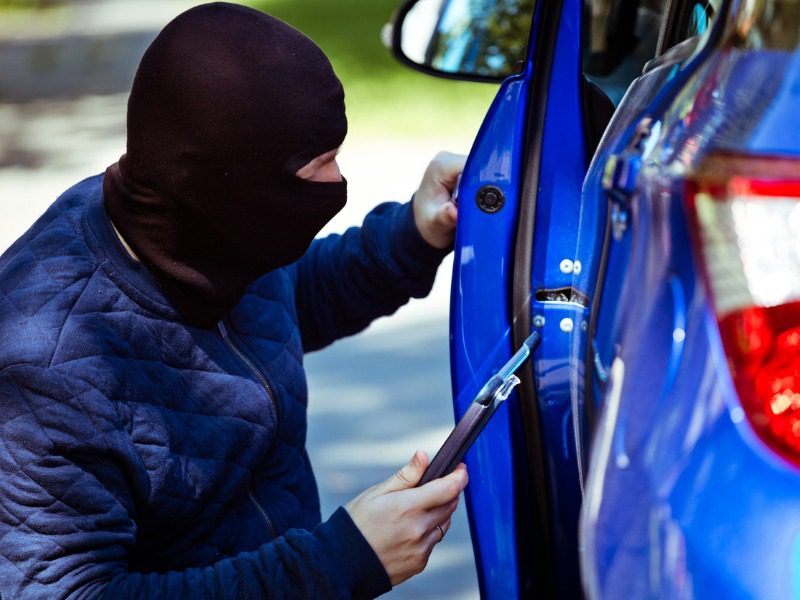How to bust a car theft ring – a look inside project MYRA

In late July, charges were announced in a nearly two-year, multi-jurisdictional investigation nicknamed Project MYRA that targeted rings of organized car thieves. The thieves altered vehicle identification numbers (VINs), and then re-registered and sold the cars privately to unsuspecting customers.
At the time, the Ontario Provincial Police (OPP) said they’d recovered 214 vehicles worth more than $12 million. But the investigation is ongoing and those numbers could change, said Bryan Gast, vice president of investigative services with Équité Association.
So far, the operation’s resulted in 44 warrants, 28 people arrested and 242 separate charges, according to OPP.
Gast’s team participated in the investigation for Équité, which has investigators across Canada who are subject-matter experts in vehicle identification. While OPP once had a specialized auto theft team, it was reassigned 15 years ago. Two dedicated auto theft units remain in Ontario – York Regional Police and Peel Regional Police.
Since Project MYRA involved suspected re-VINning of vehicles, Équité investigators met with OPP to confirm its original suspicion, consult on how the re-VINning process works and to physically examine the vehicles.
“Our investigators—several were involved—do the expert examinations to determine if, in fact, [a car] was re-VINned, determine the original identity of that vehicle, and confirm if it was stolen,” said Gast.
Once a car’s been re-VINned, it appears clean and can be re-registered with a provincial transportation ministry. The arrest list for Project MYRA included employees of Service Ontario, which performs provincial vehicle registrations.
While OPP leads Project MYRA, Gast noted the investigation touches many jurisdictions: Durham Regional Police, Halton Regional Police, Peel Regional Police, York Regional Police, Toronto Police Service and Ottawa Police Service. Saskatoon police were also involved but Équité’s investigator didn’t work directly with them.
Investigators found stolen cars that had been re-VINned and then sold within Canada to crime syndicates that initially used them for various activities. They were later re-sold to unsuspecting public consumers to generate cashflow for other criminal enterprises.
“Your average person is thinking they’re just buying a used vehicle from an online source or from somebody that’s advertising,” said Gast. “They’re ultimately buying a stolen vehicle, and that’s a significant concern because the consumer is putting out a considerable amount of money. And for the criminals, it’s pure profit.
“But once it’s identified as stolen, it gets seized. So, they’re double victimized.”
While it’s become popular to portray insurance-related crime as victimless, Gast said that’s inaccurate.
“There are many victims, and one of the concerning parts is that you have professional criminals, organized crime groups, that are profiting from this,” he said. “If you look at Interpol’s [website], you’ll see that these crimes are funding terrorism, funding organized crime, and they’re being used in other serious offenses throughout the world.”
While OPP placed the value of the stolen vehicles at around $12 million, how much money insurance companies get back will depend on several factors, Gast said.
Each car identified as stolen by Project MYRA was out of the original owner’s possession long enough for them to have received payout from their insurer – which means the insurance company now owns the vehicle. Those cars are then sold at auction to recoup losses.
“It’s not going to cover their entire payment cost,” said Gast, “but it’ll help offset that for sure.”
Then there’s the deterrent factor. “This was a significant investigative action undertaken by law enforcement, and these crime rings were disrupted,” he said. “Hopefully that will have a ripple effect.”
How that might impact premiums depends on a lot of factors, including where an insured lives and the accident and theft rate in that area.
“Crimes like these obviously affect everybody as theft rates go up. It’s obviously affecting premiums,” Gast said. “Every insurer has their own ways of underwriting. It does definitely impact rates, but it’s not the only impact.”
Feature image by iStock.com/izusek



